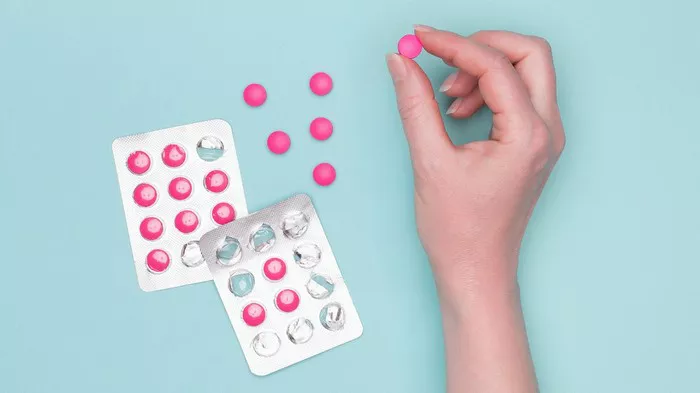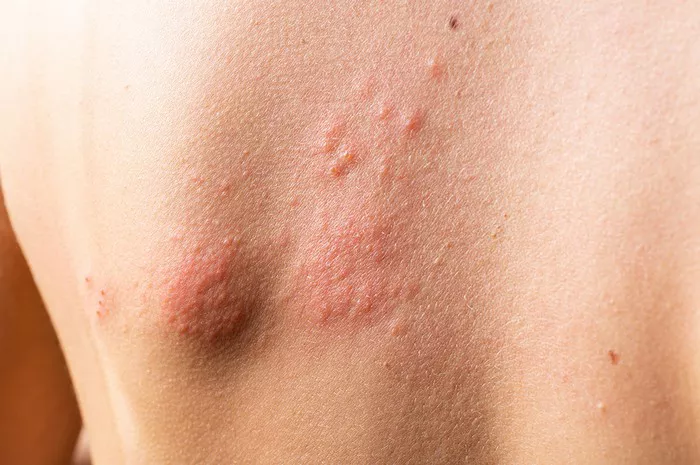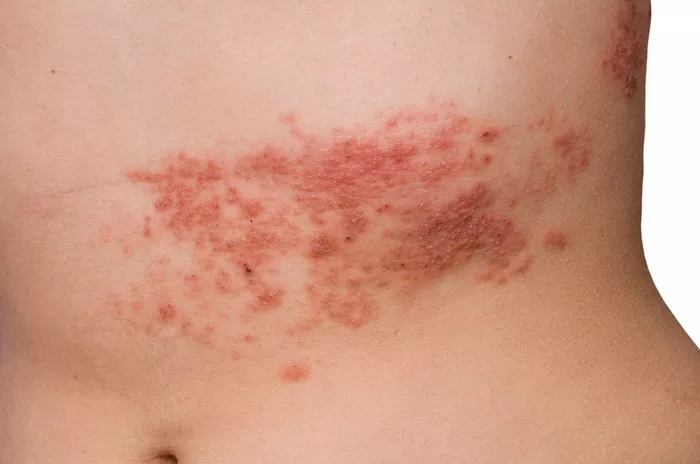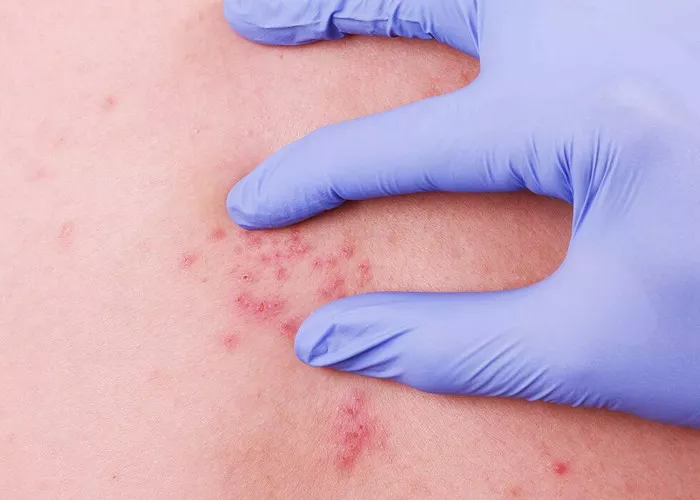Shingles, also known as herpes zoster, is a painful skin condition caused by the reactivation of the varicella-zoster virus—the same virus that causes chickenpox. While shingles can be uncomfortable and distressing, the good news is that with the right treatment, the symptoms can improve significantly, and the duration of the condition can be shortened. In this article, we will explore how long shingles typically last with medication, what treatments are available, and other important factors to consider during recovery.
Understanding Shingles
Shingles manifests as a painful rash, usually on one side of the body. It often starts with tingling, itching, or burning in a specific area, followed by the appearance of red, blister-like sores. The rash can occur anywhere on the body, but it most commonly appears on the chest, abdomen, or face.
The reactivation of the varicella-zoster virus occurs when the immune system is weakened, allowing the dormant virus from a past chickenpox infection to “wake up” and cause shingles. Shingles is more common in older adults and individuals with compromised immune systems, but it can occur at any age.
The Role of Medication in Shingles Treatment
The most effective way to manage shingles is through antiviral medications. These medications help to reduce the severity of symptoms, speed up recovery, and lower the risk of complications. Let’s look at the common treatments used for shingles:
Antiviral Medications
The primary treatment for shingles is antiviral drugs, which are most effective when taken early in the infection. These drugs can reduce the amount of virus in the body, shorten the duration of the illness, and lessen the severity of symptoms. Common antiviral medications used to treat shingles include:
- Acyclovir (Zovirax)
- Valacyclovir (Valtrex)
- Famciclovir (Famvir)
When taken within the first 72 hours of the rash appearing, antiviral medications can significantly reduce the duration of the shingles outbreak. In general, these medications help speed up the healing process and may help to reduce the risk of long-term nerve pain, also known as postherpetic neuralgia (PHN).
Pain Relief Medications
Along with antiviral medications, doctors often prescribe pain relief medications to manage the discomfort associated with shingles. These can include:
- Over-the-counter pain relievers such as acetaminophen (Tylenol) or ibuprofen (Advil, Motrin).
- Prescription pain medications such as opioids, in cases of severe pain.
- Topical treatments like lidocaine patches or capsaicin cream, which can numb the skin and reduce pain.
- Antidepressants or anticonvulsants may also be prescribed to manage nerve pain (neuropathic pain) that can linger even after the rash heals.
Steroids
In some cases, oral steroids may be prescribed to reduce inflammation and pain, especially if the rash is severe. However, steroids are not commonly prescribed for everyone with shingles and are typically only used under specific conditions.
Other Symptomatic Treatments
Soothing creams, cool compresses, and oatmeal baths can help alleviate itching and discomfort associated with the shingles rash.
Typical Duration of Shingles with Medication
The duration of shingles can vary from person to person, but with the help of antiviral medications, the course of the illness is generally shorter and less severe. Here’s what you can expect in terms of the timeline:
Initial Symptoms (1–3 Days): Before the rash appears, you may experience early warning signs, such as itching, tingling, burning, or pain in a specific area of the body. This period usually lasts for 1 to 3 days and is often the time when you can begin antiviral treatment for the best results.
Rash Development (3–5 Days): Once the rash appears, it typically progresses over the next few days. The rash consists of small, fluid-filled blisters that break open and scab over. This stage is the most contagious, and antiviral medications are particularly effective at this point in reducing the severity of the outbreak.
Healing Stage (2–4 Weeks): With antiviral medication, the rash will typically begin to heal within 2 to 4 weeks. The blisters will dry up and scab over, and the pain and itching will start to subside. The healing process may take longer for some people, especially those with weakened immune systems.
Postherpetic Neuralgia (PHN): For some individuals, nerve pain can persist even after the rash has healed. This condition, called postherpetic neuralgia (PHN), can last for weeks, months, or even years. Antiviral medications do not prevent PHN, but they can reduce the severity of the pain and potentially shorten its duration if taken early.
Factors That Influence Recovery Time
Several factors can affect how long it takes for shingles to go away, even when taking medication. These include:
Age: Older adults, especially those over the age of 60, may experience longer recovery times and more severe symptoms. The immune system weakens with age, making it harder for the body to fight off infections like shingles.
Immune System Health: People with compromised immune systems—such as those with HIV/AIDS, cancer, or those on immunosuppressive medications—may experience more severe cases of shingles and longer recovery times. They are also at a higher risk of complications like PHN.
Timing of Medication: The sooner antiviral medications are started, the better the outcome. If antiviral drugs are started within 72 hours of the rash appearing, they can significantly shorten the duration of the outbreak and reduce the severity of symptoms.
Location of the Rash: If shingles affects sensitive areas of the body, such as the face or eyes, recovery may take longer, and the risk of complications can be higher. Shingles in these areas may require more aggressive treatment to prevent complications.
Severity of the Rash: People with more widespread or severe rashes may experience longer recovery times than those with localized rashes. The intensity of the pain, as well as the size and number of blisters, can all contribute to the duration of the illness.
Potential Complications of Shingles
While most people recover from shingles within a few weeks, complications can arise, especially if the condition is not treated promptly. Some of the most common complications include:
Postherpetic Neuralgia (PHN): This is the most common complication and occurs when nerve pain continues after the rash heals. PHN can be severe and difficult to treat.
Vision Loss: If shingles affects the eyes (ophthalmic shingles), it can lead to serious eye problems, including vision loss.
Bacterial Infections: The shingles rash can become infected with bacteria, leading to additional complications.
Neurological Issues: In rare cases, shingles can cause encephalitis (inflammation of the brain), stroke, or hearing problems.
Preventing Shingles
While shingles cannot always be prevented, there are steps you can take to lower your risk:
Get the Shingles Vaccine: The shingles vaccine, recommended for adults over the age of 50, can help prevent shingles or reduce the severity of the illness if it does occur. It is particularly helpful in reducing the risk of postherpetic neuralgia.
Maintain a Healthy Immune System: A strong immune system can help prevent shingles. Eating a balanced diet, staying active, managing stress, and getting enough sleep are all important factors in keeping your immune system healthy.
Conclusion
With antiviral medication, shingles usually resolves within 2 to 4 weeks. However, the exact duration can vary depending on factors like age, overall health, the severity of the rash, and the timing of treatment. It is important to start antiviral therapy as soon as possible for the best outcome. Although the rash itself may go away in a few weeks, some individuals may experience lingering nerve pain (postherpetic neuralgia) for months or even years.
If you suspect you have shingles, it’s important to consult with a healthcare provider for proper diagnosis and treatment. Early intervention can make a significant difference in both the duration and severity of the illness.
Related topics:



























